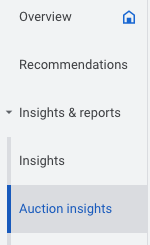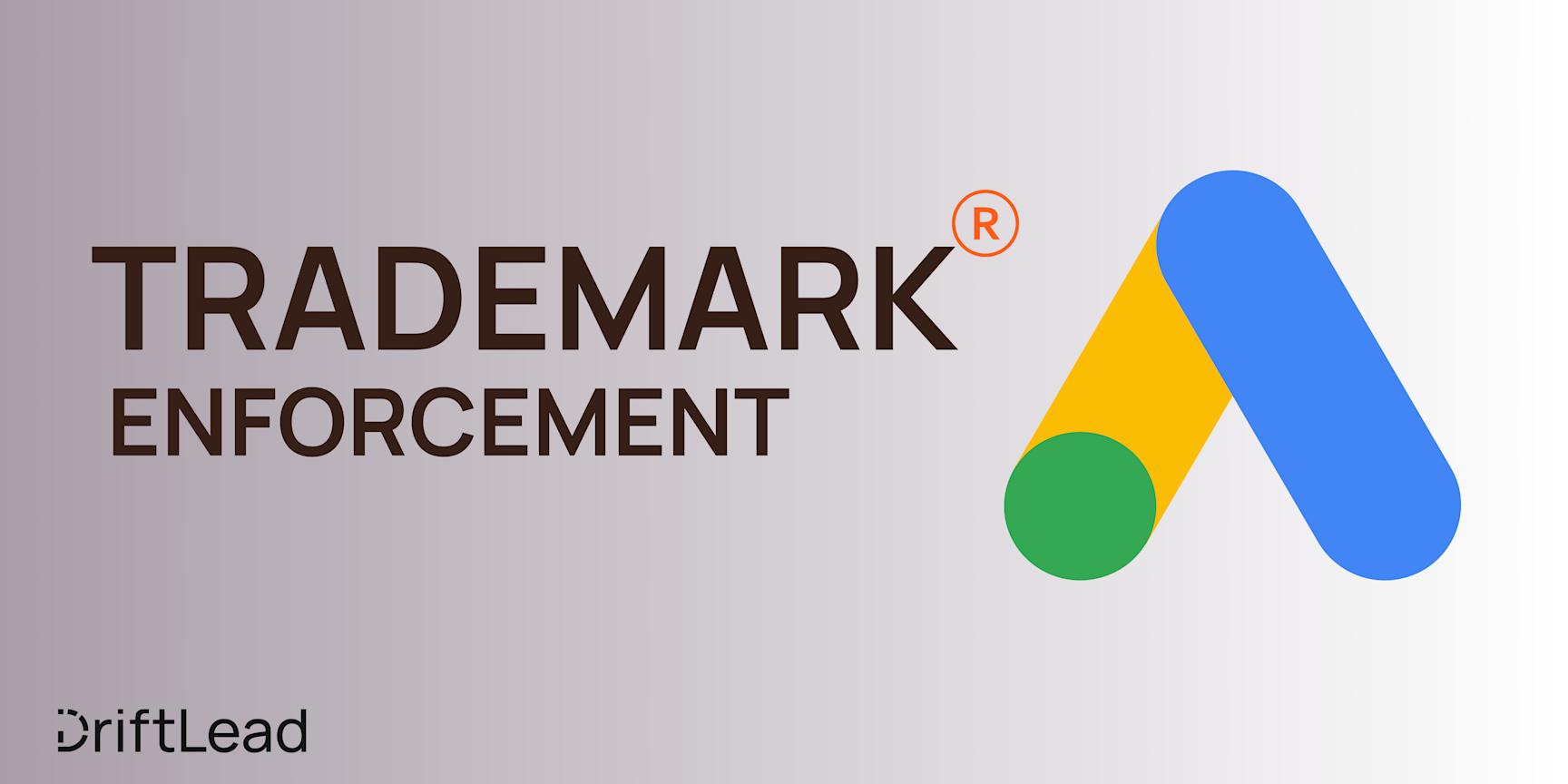Outranking Share in Google Ads - What It Is & How to Optimize For It
15 Feb, 2024
Learn what outranking share is in Google Ads and how to use it and other competitive metrics to dominate the SERP.

Jump to:
Hop on our weekly newsletter train! We're sharing tips so stellar, we're practically job-threatening ourselves!
Like the Kansas City Chiefs in the Super Bowl, every advertiser wants their Google search ads to be the MVP - Most Visible Position. But achieving that top spot in the search results can feel like trying to tackle Travis Kelce on a good day – it takes strategy, strength, and a little bit of finesse 🏈.
Since sunsetting "average position," Google has forced marketers to master other competitive metrics in Google Ads. Today, we are going to discuss one of these in particular—outranking share.
In this post, we'll break down what Outranking Share is, why it's as important as Usher's halftime performance was to reviving his career, and how you can optimize for it to ensure your ads aren't just sitting on the sidelines. So, huddle up, and let's get your Google Ads into the end zone! 🎤🏆
Understanding Competitive Metrics in Google Ads
Imagine playing a game of chess blindfolded, making moves without seeing your opponent's strategy. That's kind of like running Google Ads campaigns without monitoring competitive metrics. These metrics highlight the competitive landscape that you are playing in and can reveal how your ads are performing compared to others in your industry.
Today, with automated bidding, competitive metrics are not something you need to monitor as frequently as you did when you were setting keyword bids manually (whew...remember those days?) But by understanding how your ads are performing and how aggressively your competitors are bidding, you can make more informed decisions to outmaneuver your competition, optimize your ad spend, and capture the attention of your target audience.
How to View Auction Insights in Google Ads
Now, this post will not be entirely useful to you if you don't first know how to access the metrics we will be discussing, so before we dive into what these metrics mean and how to optimize them, let's talk about how to get to them.
The Auction insights report provides a wealth of competitive metrics, including how often your ads outrank others, the overlap rate, and more. Here's a step-by-step guide on how ot access this report in the Google Ads interface.
Sign in to Google Ads: Start by logging into your Google Ads account. Make sure you're in the right account if you manage multiple ones.
Select Your Campaign, Ad Group, or Keywords: Auction Insights can be viewed at different levels—campaign, ad group, or keywords. Choose the level that you want to analyze by navigating to the respective section in your Google Ads dashboard.
Open the Auction Insights Report: Once you've selected the campaign, ad group, or keywords, look for the "Auction Insights" option located under the "Insights & Reports" section in the left-hand navigation.
;![GatsbyImage]()
Review the Report: After opening the Auction Insights report, you'll be presented with a table displaying various competitive metrics. These include Impression Share, Average Position, Overlap Rate, Position Above Rate, Top of Page Rate, and Outranking Share. You can customize the columns if desired or interpret from here.
Interpreting the Data
Before diving into outranking share, let's touch on some of the other competitive metrics you will likely come across in your analyses.
Impression Share: This metric shows the percentage of impressions your ads received out of the total number of times your ads could have been shown. It's a good indicator of your visibility.
Overlap Rate: This tells you how often your ads and a competitor's ads were shown simultaneously. A high overlap rate indicates you're directly competing with that advertiser in the SERP.
Position Above Rate: This metric shows how often a competitor's ad appeared in a higher position than yours when both ads were shown. It can help identify competitors you may want to outbid.
Top of Page Rate: This indicates how often your ad appeared at the top of the search results page, above the organic listings.
Absolute Top of Page Rate: This is the percentage of times your ad showed in the first position.
Outranking Share: This shows how often your ad ranked higher in the search results than a competitor's ad or appeared when theirs did not.
What is Outranking Share and What It Means for Your Campaigns
Now for the star of the show—or in this case, the post—outranking share.
What is Outranking Share in Google Ads?
Outranking Share is a percentage that reflects how often your ad ranked higher in the search results than another advertiser's ad, or if your ad showed when theirs did not.
For instance, if your Outranking Share is 30% against a competitor, this means that in 30% of the auctions where both your ads are eligible to appear, yours ranked higher or showed when the competitor's ad did not.
How Outranking Share is Calculated
Google calculates Outranking Share by comparing the number of times your ad outranked another advertiser's ad or showed when theirs did not, divided by the total number of ad auctions you both participated in. This metric considers your bidding strategy, ad relevance, and Quality Score.
What a High or Low Outranking Share Means
A high Outranking Share indicates that your ads are doing well against the competition. It means you're winning the ad placement more often than not. On the flip side, a low Outranking Share could be a sign that you need to tweak your strategy. Maybe you need to bid more aggressively, or perhaps your ad copy just needs a refresh.
Using Outranking Share to Your Advantage
Understanding your Outranking Share can help you make strategic decisions about your Google Ads campaigns. If you're unhappy with your score, you might consider increasing your bids, improving your ad's relevance, or even targeting different keywords.
Interpreting Google Ads Competitive Metrics
So what does all of this mean for your campaigns? While metrics like Outranking Share offer valuable insights, it's crucial to interpret them within the context of your overall marketing strategy. Let's explore how to optimize these metrics for your benefit and recognize when they might not warrant your attention.
Competitive metrics in Google Ads, including Outranking Share, provide a snapshot of how your ads measure up against competitors. A high Outranking Share suggests your ads frequently appear above your competitors', indicating strong performance. Conversely, a low score might signal the need for strategic adjustments. Here's how to use these insights effectively:
Adjust Bidding Strategies: If your Outranking Share is lower than desired, consider revising your bidding strategy. Increasing bids on high-value keywords can improve your ad's position and visibility.
Enhance Ad Quality: Competitive metrics can also reflect the quality of your ads. Improving ad copy, using relevant keywords, and optimizing landing pages can increase your Quality Score, thereby enhancing your ad rank and Outranking Share.
Refine Targeting: Sometimes, the issue isn't how much you bid but whom you're targeting. Ensure your ads reach the most relevant audience by refining your targeting settings. This can improve ad performance without necessarily increasing costs.
When to Ignore Competitive Metrics
While competitive metrics are useful, they're not the be-all and end-all of your Google Ads strategy. Here are scenarios when you might choose to ignore these metrics:
High ROI Campaigns: If your campaigns are achieving a high return on investment (ROI) despite a lower Outranking Share, it might not be worth overhauling your strategy. In such cases, maintaining a profitable approach is more important than outperforming competitors in every auction.
Limited Budgets: For advertisers with limited budgets, constantly trying to outbid competitors can lead to diminished returns. Focus on optimizing other aspects of your campaigns, such as ad relevance and targeting, to achieve better results without escalating costs.
Balancing Competitive Metrics with Overall Goals
Ultimately, the key to leveraging Google Ads competitive metrics lies in balancing them with your overall campaign objectives. While monitoring and striving to improve metrics like Outranking Share is beneficial, they should complement, not dictate, your advertising strategy. Regularly review your campaign performance, adjust your tactics based on comprehensive data analysis, and prioritize strategies that align with your business goals and budget.
Optimizing Competitive Metrics in Google Ads
If your auction insight report is not delivering on your goals or expectations, here are some tactical moves you can make to boost metrics like Outranking Share and ensure your ads are not just competing, but winning.
Increase Your Budget Strategically
Increasing your ad budget can directly impact your competitive metrics by allowing for higher bids and improved ad placements. However, it's essential to approach this strategically:
Focus on High-Performing Campaigns: Allocate additional budget to campaigns or ad groups that have shown promising results or possess high potential based on your data analysis.
Monitor Performance Closely: As you adjust your budget, keep a close eye on performance metrics to ensure that increased spending leads to proportional improvements in results.
Refine Your Bidding Strategy
Your choice of bidding strategy plays a pivotal role in how your ads perform against competitors:
Consider Manual Bidding for Precision: Manual bidding gives you control over bid amounts for specific ad groups or keywords, allowing you to aggressively target high-value opportunities.
Leverage Automated Bidding for Efficiency: Google's automated bidding strategies, such as Target Impression Share, can dynamically adjust your bids to achieve desired visibility and outranking goals.
Improve Ad Quality and Relevance
The quality and relevance of your ads significantly affect your Quality Score, ad rank, and, consequently, your competitive metrics:
Enhance Ad Copy: Develop compelling ad copy that accurately reflects the search intent of your target audience and incorporates relevant keywords.
Optimize Landing Pages: Ensure that your landing pages are closely aligned with your ad messages, offer a great user experience, and are optimized for conversions. This not only improves your Quality Score but also contributes to better ad performance.
Target More Effectively
Sharpening your targeting can improve ad relevance and efficiency, leading to better competitive metrics:
Utilize Negative Keywords: Implement negative keywords to exclude irrelevant traffic and reduce wasted ad spend.
Adjust Targeting Settings: Fine-tune your targeting options based on demographics, locations, and user interests to reach the most relevant audience segments.
Continuous Testing and Learning
The digital advertising landscape is dynamic, making continuous testing and learning essential for maintaining and improving competitive metrics:
A/B Test Your Ads: Regularly test different versions of your ads (A/B testing) to identify the most effective elements in terms of copy, design, and calls-to-action.
Analyze and Adjust: Use Google Ads' analytics tools to deep dive into your campaign performance. Analyze the data to understand what's working and where there's room for improvement. Based on these insights, make informed adjustments to your campaigns.
Conclusion
As we cross the finish line of our journey through the competitive metrics of Google Ads. If you're ready to rev up your Google Ads campaigns and drive your business toward greater success, DriftLead is here to help. As a performance-based paid media agency, DriftLead specializes in crafting bespoke marketing plans that align with your unique goals and challenges.
Don't let your Google Ads campaigns idle any longer. Get a free marketing plan from DriftLead and shift your advertising efforts into high gear. Visit DriftLead's marketing plan page to start your journey toward optimized ad performance today. Your competitors are already in the race; it's time to show them what you've got. 🏁🚀







